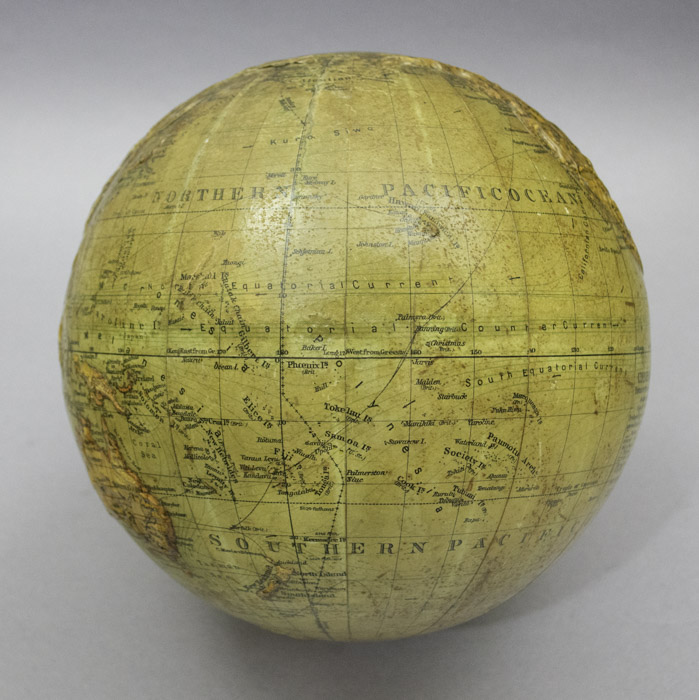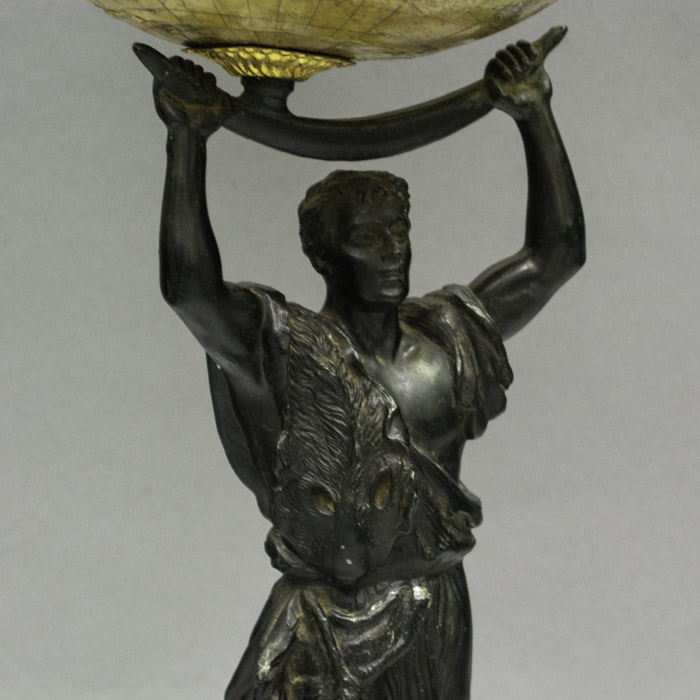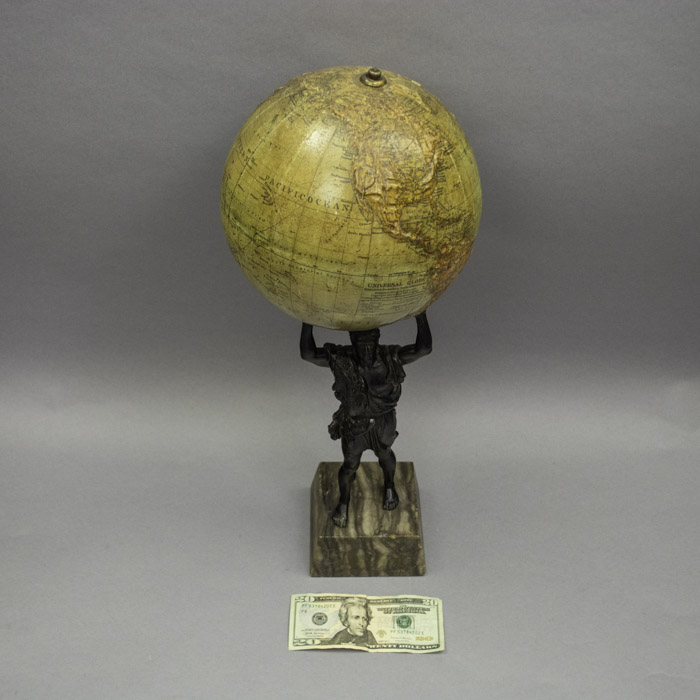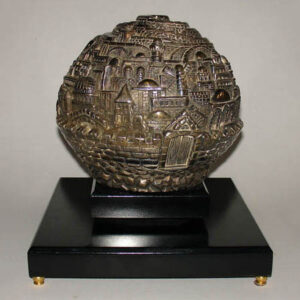Description
An informative survey of known three-dimensional relief globes was undertaken by William A. Briesemeister for Geographical Review in 1957. According to this scholarship, raised relief globes likely originated in the late 18th century, the earliest one believed to have been designed in 1777 by Pierre Lartique for presentation to Louis XVI, though it is not known to have survived to this day. Driven by innovative pedagogical approaches for blind students, a three-dimensional relief globe was designed and created in the United States by Steven P. Ruggles in 1837 for use at the Perkins School for the Blind at Watertown, Massachusetts. Relief globe manufacturing in the mid-19th century throughout the world was fairly uncommon. One known example of a mid-19th century French relief globe is a 12-inch model on marble stand by Thury & Belnet. In the late 19th Century, Thomas Jones, an American inventor and globemaker made major strides in the design and production of relief globes. He patented a process for the manufacture of metal clad relief globes in 1890. According to Jones, his globes were designed such that “the topography of the land-sections is represented in relief and the water-spaces cut away or depressed, so that such spaces may be shown as adapted to hold water and be made in fact sheets of water.” Jones relief globes cast in plaster type of material continued to made in the early 20th Century by A.H. Andrews and Rand McNally, both Chicago globe makers. In the late 19th and early 20th Centuries raised relief globes were produced in Germany, notably an 8 ¼ inch “Universal Globe” by Paul Rath, Leipzig, raised on a bronze-patinated metal figure of Hercules.
Cartouche: Universal Globe, Diameter 8 ¼ inches Published 1921 (Made in Germany). Copyright 1921 by Paul Räth, Leipzig
Condition: Generally very good with the usual overall light toning, wear, handling, Some scattered minor abrasions particularly to mountain tops and extremities professionally restored.
References:
Briesemeister, William A. “Some Three-Dimensional Relief Globes, Past and Present.” Geographical Review, Vol. 47, No. 2. 1957, pp. 251-260
Catalogue of the Educational Division of the South Kensington Museum. 8th ed. London: 1867. p. 334. Online at Google Books: https://books.google.com/books?id=yr4IAAAAQAAJ&pg=PA334&lpg=PA334 (25 March 2020).
Reuben, Levi. “Two Thoughts on the Teaching of History and Geography.” New York Teacher. Vol. 10, No. 8. May 1861. p. 373. Online at Google Books: https://books.google.com/books?id=nns5AQAAMAAJ&pg=PA373 (25 March 2020).
“Second Meeting, Monday, November 26th, 1860.” Proceedings of the Royal Geographical Society of London. Vol. 5. p. 21. https://books.google.com/books?id=lfMRAAAAYAAJ&pg=PA21 (25 March 2020).
“Sphère-reliefs par Thury instituteur.” Bibliothèque Nationale de France. 3 March 2015. https://gallica.bnf.fr/ark:/12148/btv1b550087327 (25 March 2020).





















